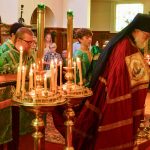
Battle Of The Boyne
In an attempt to regain the thrones of England and Scotland, King James II of England & Ireland tried to reclaim the throne to defend Protestantism. This was a result of the “Invitation to William” from the Immortal Seven, English peers who asked him to take the throne in defense of Protestantism. The Battle of the Boyne took place on July 1, 1690, Old Style, and it was between the forces of deposed King James II of England & Ireland and King William III and his wife Queen Mary II.
This battle occurred near the town of Drogheda in what is now the modern-day Republic of Ireland but was then known as the Kingdom of Ireland. It took place across the River Boyne. This battle caused the tides of the war to turn against James and resulted in a victory for William. This marked a turning point in the war and aided in the continued Protestant ascendancy in the Kingdom of Ireland. The holiday The Twelfth—a holiday that falls on the 12th of July—celebrates the victory of Protestant William of Orange over Catholic King James II.
Facts About the Battle of the Boyne
During our research on the Battle of the Boyne, we came across some interesting facts that we think everyone reading about this historical battle will want to know more about. So without further ado, we’re going to deliver some facts about this battle and its implications on the course of history.
The Battle Was Between a Protestant Dutch Prince and a Deposed Catholic English King
To understand this battle or the events surrounding it, one of the most important pieces of information we can provide is that it was the result of James II of England & Ireland being deposed. He was deposed in a bloodless coup two years earlier when the Dutch Prince was invited to overthrow him by prominent English Protestants who were fearful of his promotion of Catholicism in the Protestant-majority country.
William’s Men Had to Cross the River Boyne
Although William’s forces had to cross the River Boyne on horseback to confront James’s forces situated on the river’s south bank, they were able to do so due to their superior numbers. William’s forces outnumbered James’s forces by almost 11,000 men. William had 23,500 soldiers, and James only had 12,500.
James Would Go into Exile After the Battle
This battle was the last time these two crowned kings of England, Ireland, and Scotland would face each other on the battlefield. After William’s win, he marched on Dublin, and James abandoned his army during their retreat. James would go on to escape to France, where he lived out the rest of his life in exile.
Modern Celebrations of This Battle
The victory at the Battle of the Boyne is celebrated as an Ulster Protestant holiday known as The Twelfth. This holiday was first held in the 18th century in Ulster and celebrates the Glorious Revolution of 1688 and the victory of King William of Orange over King James II at the Battle of the Boyne.








